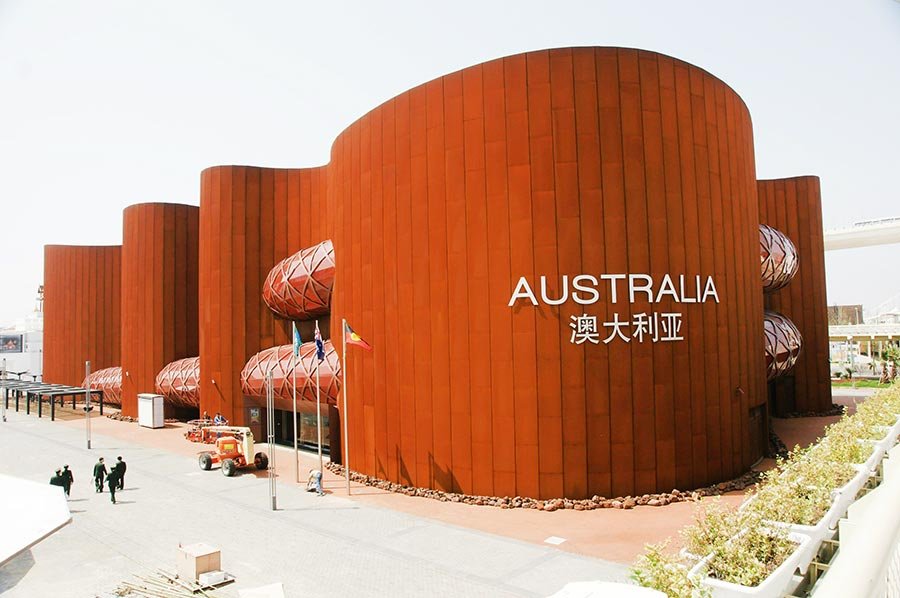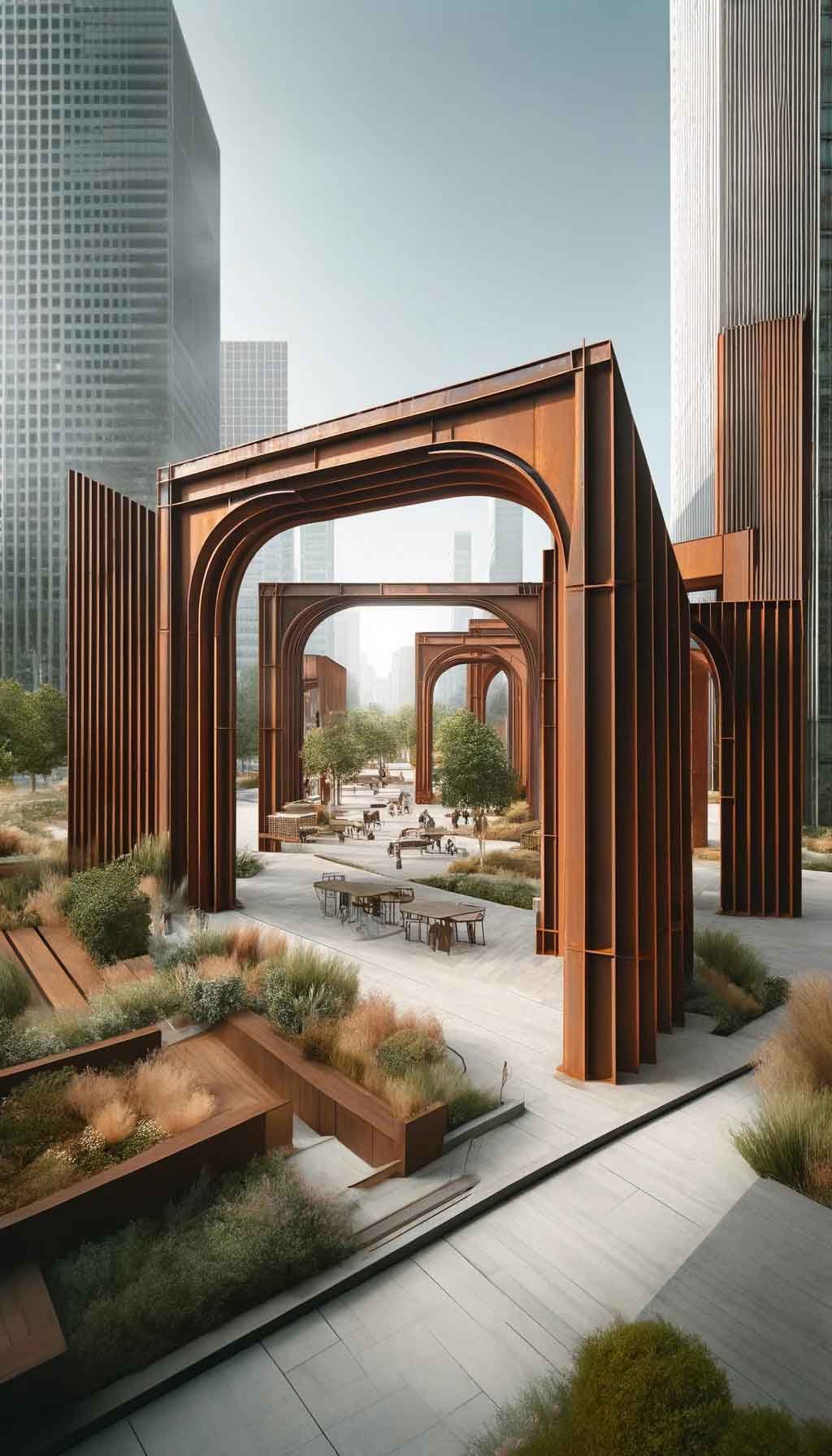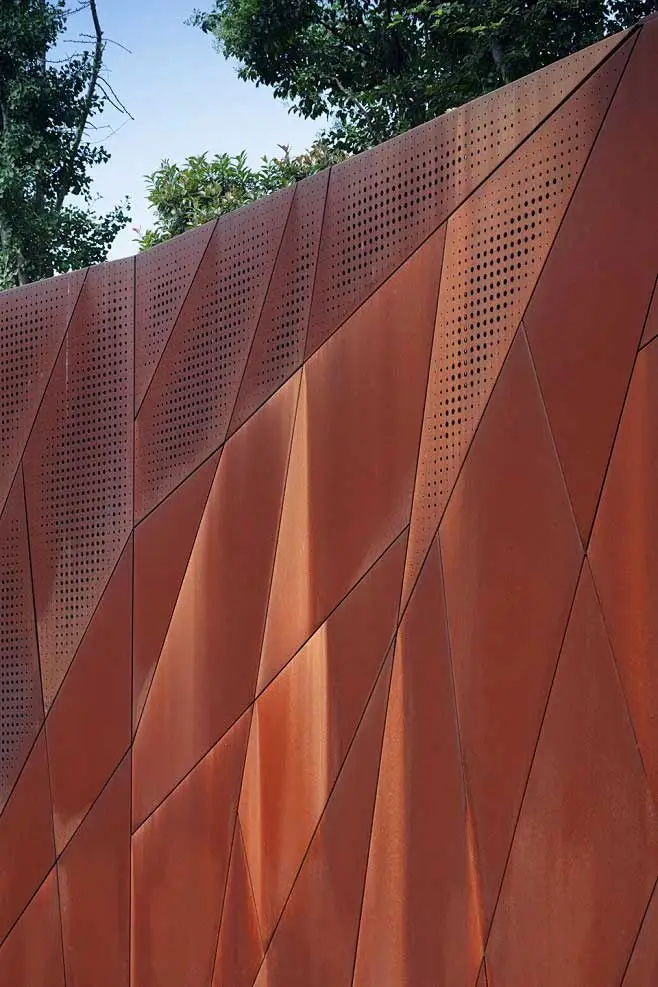Corten Steel

Corten Steel Metal
Corten steel is a new generation of advanced steel materials widely used in the production of trains, containers, and bridges;Corten steel is used as building facade materials in North and Western Europe, Australia, Asia, Japan, and South Korea. Having a specific history, he has a unique surface characteristic and can resist atmospheric corrosion of steel. Adding copper, chromium, nickel and other weather-resistant elements formed a dense and adhesive oxide layer of 50 ~ 100um thickness between the rust layer and the substrate. This particular thick oxide layer has a stable, uniform natural rust red. With the flow of time, the color of weathering steel rust layer will gradually become dark. Because of this feature, weathering steel for construction projects can be used for landscape sculpture and landscape metal walls and modeling in various styles. It can Be a lightbox or other metal materials. Corrosion-resistant weathering steel is relatively easy to shape into a wide variety of shapes to maintain excellent integrity, which wood, stone, and concrete are difficult to achieve in the weathering steel metal panels to do the most commonly used techniques, large areas of squares, parks, and museums, to do the city landscape image and landscape wall, Etc.Their unique visual expression and shape-shaping ability are strong; the ability to clearly define the space and its cost is relatively low.
Shape Selection of
Corten Steel Metal
The metal surface of Corten steel can form a particular dense oxide layer with stable and uniform natural rust-red color, which becomes an attractive building exterior wall material. The mix with other different materials can also present delicate, cold, warm, soft, and hard contrast combinations, condensed into a rich metallic color. The Australian Pavilion at Expo 2010 in Shanghai is made of red ochre weather-resistant steel. The rolling, wavy exterior of weathering steel represents Australia’s coastline and its resource advantage in iron ore. Throughout the project, the red color of Corten steel represents not only nature but also Australia’s mineral wealth.
Specification of
Weathering Steel Landscape
Standard:JIS/AISI/ASTM/GB/DIN/EN
Materials:Corten Steel
Thickness:1.0-3.0mm
Size:Customizable
Color:Rust red、Black、Etc…
Surface:Natural Rust
Application:Gardens, Squares
Packaging:Foam + Bubble Bag + Wooden Box
Application of
Corten Steel Metals
In the construction project, the landscape or the interior design often uses the unique weathering steel rust color material. Its color and texture are solid. The excellent appearance blends with the surrounding environment and presents modern art beauty. In particular, the long-term exposure to the natural environment, over time, the formation of corrosion-resistant surface protection.
Corten steel screen partition, in the division of space, to avoid the monotonous line of sight, enrich the landscape effect, whether natural corrosion of the rough style of the garden increased the texture of the details. It has a protective rust layer to resist atmospheric corrosion. Compared with ordinary carbon steel, Weathering Steel has better corrosion resistance in the atmosphere. Compared with stainless steel, weathering steel has only trace amounts of alloy elements, such as phosphorus, copper, chromium, vanadium, titanium, Etc. The total amount of alloy elements account for only a few percent, unlike stainless steel, which amounts to more than ten percent, so the price is lower. Weathering Steel landscape wall is made of ordinary carbon steel with a small amount of copper, nickel, and other corrosion-resistant elements. It has high-quality steel, toughness, plastic extension, molding, welding and cutting, wear and heat, and weather resistance.
Advantages of
Corten Steel Metals
High Structural Strength And Durability
One of the main advantages of Weathering steel metal is its excellent strength and durability. Compared with standard carbon steel, Weathering steel has higher yield strength and is an excellent choice for structural applications requiring high bearing capacity. It can withstand heavy loads and is suitable for construction projects such as bridges, buildings, and even sculptures.
In addition, the self-healing properties of Weathering steel provide additional durability. The natural rust like copper green formed on the surface of Weathering steel is a protective barrier against corrosion and atmospheric elements. This layer can prevent further degradation and improve the service life of Weathering steel structure.
Weathering Resistance
The ability of Weathering steel to withstand severe weather conditions is another advantage different from traditional steel. When exposed to harsh environment, Weathering steel will form a stable rust like copper green, playing the role of protective coating. This natural barrier can prevent moisture and oxygen from entering the lower layer of steel, effectively inhibiting corrosion and extending its service life.
The uniqueness of Weathering steel lies in its rusty appearance, which evolves over time and endows the structure with unique and organic aesthetic appeal. This process not only enhances its corrosion resistance, but also adds charm and individuality to various architectural designs.
Low mMaintenance Requirements
The unique copper green structure of Weathering steel reduces the need for regular maintenance. Unlike traditional steel, weather resistance does not require painting or protective coatings to prevent corrosion. This low maintenance feature makes it an ideal choice for applications that require minimal maintenance.
By eliminating the need for additional protective coatings, Weathering steel has achieved long-term savings in materials and maintenance costs. This makes it an attractive choice for various projects, including outdoor art, architectural facades, and landscape features.
Multifunctional Design Possibilities
In addition to structural integrity, Weathering steel also provides a great diversity of design. Its unique warm reddish brown hue provides architects and designers with a striking aesthetic element that blends harmoniously with various environments. The appearance of Weathering steel adds unique color to modern and traditional environments, making it a popular choice in urban landscape.
From complex exterior walls to eye-catching sculptures and outdoor furniture, Weathering steel has found its own position in the creative field. Its extensibility allows for customized shapes, while its diverse finishes and textures provide opportunities for endless experimentation.

FAQ
A1:Stainless steel relies on preventing rust to combat corrosion, whereas weathering steel allows a protective oxide layer to form naturally, which inhibits further oxidation and enhances its weather resistance.
A2:The use of weathering steel indoors is increasingly popular, visible in both public spaces and private homes. Its unique color and texture lend a distinct aesthetic appeal to interior designs.
A3:Weathering steel is suitable for fire-resistant panels and H-beams in high-rise constructions. It can reduce the need for fireproof coatings and wraps.
A4:Yes, weathering steel typically exhibits good weldability. However, removing the oxide layer is necessary during welding, and sometimes specialized welding techniques or materials may be required.
A5:Corten steel is distinguished by its unique rusted appearance, ranging from orange-brown to deep reddish-brown. It boasts high tensile strength, corrosion resistance, and low maintenance requirements. Additionally, it is renowned for its durability and ability to withstand harsh environmental conditions.
A6:Corten steel is commonly used in outdoor and architectural contexts, such as bridges, buildings, sculptures, garden landscapes, outdoor art installations, railway vehicles, and structural components. Its natural aesthetic appeal and corrosion resistance make it highly favored for both functional and decorative purposes.
A7:The time required for weathering steel to develop its distinctive rusted appearance varies depending on environmental conditions such as humidity, rainfall, and the level of air pollution. Typically, it takes several months to a few years to fully develop the patina.
A8:Although weathering steel has strong corrosion resistance and is suitable for most outdoor environments, its performance may vary under extreme conditions, such as in marine environments with high salt exposure or industrial areas with high levels of pollutants. In these scenarios, proper design considerations and maintenance strategies are crucial to maximize the lifespan of weathering steel components.


